I had never been propositioned by a prostitute before.
Gaudy Japanese logos were emblazoned across the store I had just walked out of. It was full of gaudy paraphernalia--inflatable animals, license plates (one from Montana), blinking and beeping toys, and a pen that zapped if you pushed the end. A veritable smorgasbord of useless sh**.
We emerged in the open, the sun high above us. This was not a seedy alley in the middle of the night. In fact, it was in the center of the tourist section on the island of Saipan.
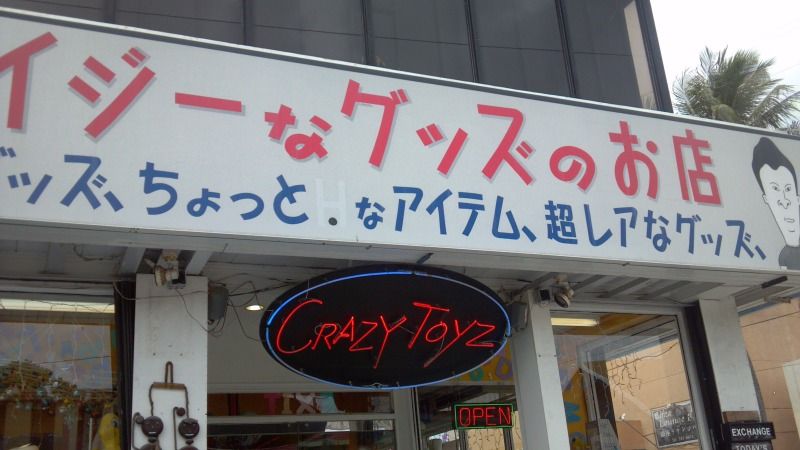
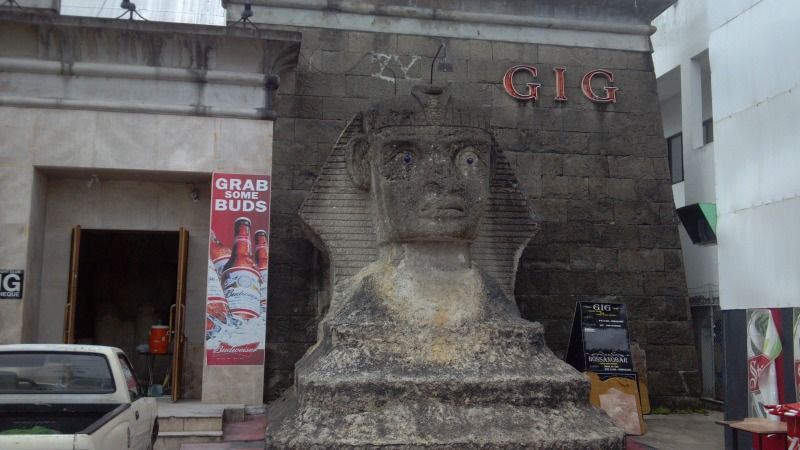
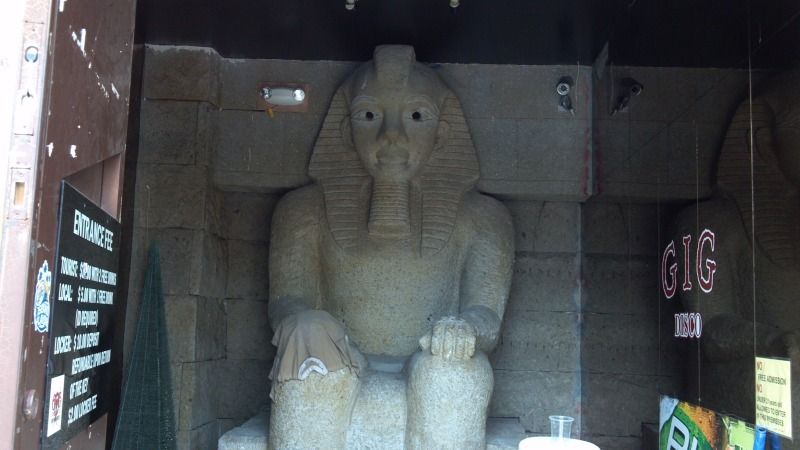

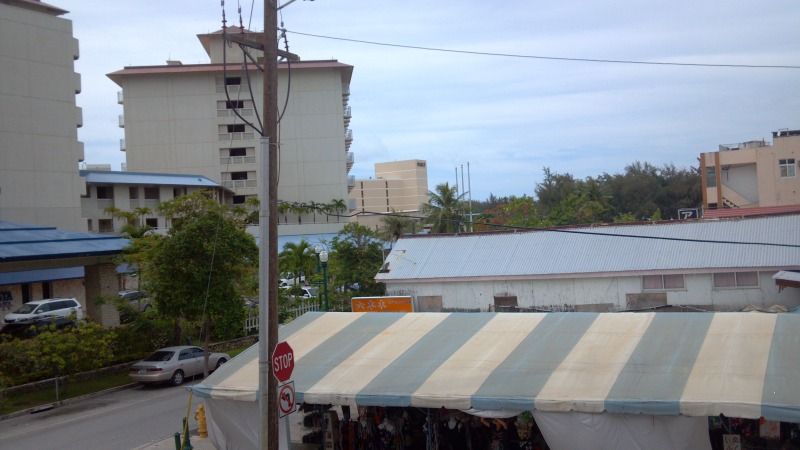
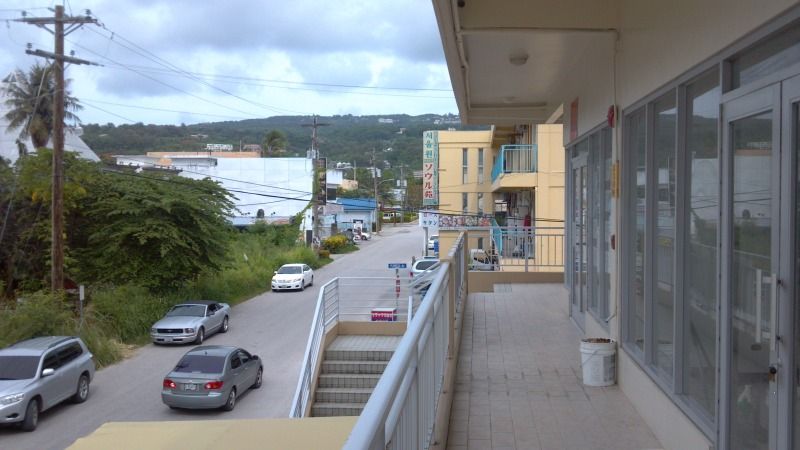
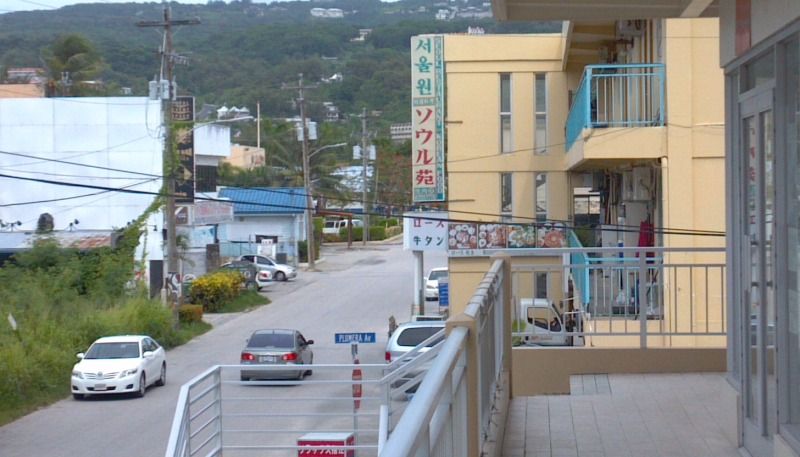
"Hey, you want a massage?" she yelled at me from a building with an open front. It was a bigger woman preparing a table by laying a blanket across it.
"Is it free?" I joked.
She started laughing and wagged her finger at me.
Well, the people are nice here, I thought, nice enough to joke around with an American. It was odd to me, however: Why were there so many massage places around Saipan? How could an economy support them? Did the Asian tourists really like massages? Oddly, too, the popular karaoke bars had no windows. The bars I was familiar with did not look so... dark and intimidating. Another 'club' we passed had two sphinx guarding it. I walked in out of curiosity. The walls were covered in dark glass and behind another door I noticed blinking, fluorescent lights. Less to say, I was freaked out by this "Jacob Ladder"-esque hell and quickly left. Subconsciously, I knew something wasn't right, but I didn't realize it until later.
After I was yelled at by the woman like I mentioned above, we passed another massage parlor. This place did have a window where I could see several Asian women sitting on couches. It was not clear where the massages took place. I stopped to stare at the sign in front. It was on a street corner, held up like a typical ad in a mall, but it was large, pink, and written in an Asian language with huge characters. I noticed something was only $4 and pointed this out to Rob. The women inside looked up excitedly. One ran out. I asked her what the $4 bought, but there was clearly a language barrier. She hurried back inside and brought out an English menu. "Half off!" she told me in a foreign accent.
"Um..." I said, "I think we are going to go look around some more. Maybe we'll come back." She smiled, looking a tad discouraged, and we left. The thing was, she wasn't a bad looking woman. Her face was like a happy moon. She could have been at a bar and I wouldn't have noticed the difference.
I soon learned Saipan is infested with prostitution. Many of the buildings I mentioned were a facade for something like a brothel, and I finally understood why almost every store I visited had a 'libido' section. Who knew? Apparently everyone but me.
I was to discover this was a symptom of a wider sickness. Saipan has many empty buildings looking like something from History Channel's "Life After People". Trees burst through the roofs. Vines wormed their way into the cracking plaster. These are not just little houses either. Huge incomplete hotels stand on hills and along the ocean. They are leftovers from companies who ran out of money half-way in between making them. Saipan is covered in massage parlors, karaoke clubs, souvenir shops, and dirty-looking restaurants. It made me want to walk around and explore the seedier areas of run-down Garapan. One blogger described it as "Vegas 50 years ago run by the Chinese." This assessment might be not too far off. Huge hotels rise along the shoreline, blasted with sun and rain, they look old and unfilled. It still fascinates me to see a brothel next to a bar, next to a shooting gallery, next to an Asian food restaurant, next to another brothel, next to a KFC. It happens on Guam too and truly makes me feel like I am on another world.
--------------------------------------------------
Though Saipan is under the purview of the U.S., it is not a state. This has its pluses and minuses, but it also means its laws dealing with immigration are (or were) different, i.e. lax. Because of this loophole, many foreigners were brought onto the island to work in factories. Promised eventual citizenship, they were treated like indentured servants, working long hours with little pay and in bad conditions. Many companies set up shop here to take advantage of this loophole: Levi Strauss, Phillips-Van Heusen, Abercrombie & Fitch to name a few. They avoided tariffs and labeled their products as "made in America". Meanwhile, their employees were paid next to nothing. Saipan was hit doubly hard by forces beyond their control. After the Asian currency crisis of the late '90s, the island suffered a hit in tourism. Many of airlines which used to service the island stopped carrying flights here. It also suffered various scandals, including money laundering dealing with Jack Abramoff and the local CMNI government being unable to pay employee wages. The U.S. became more involved with its immigration policies after conditions at the factories were found to be 'slave-like'. This led to an outflow of capital as companies shifted production elsewhere. It also caused one of the nicest pension plans in the nation to go bankrupt.
This change in fortune hit the economy hard. The immigrants, many of them women, no longer had a way to support themselves (Saipan has a very high female-to-male ratio, perhaps the highest in the world). Some turned to prostitution. Without the heavy flow of tourists, many of the vibrant hotels fell into disrepair. They began to resemble the rest of the island--low income and not well maintained. One can feel the island has a broken bone, but where is the doctor to fix it? The CNMI is the only place in the U.S. that the Chinese can visit without a visa. This is the islands' one saving grace. In many ways, Saipan does feel more Asian than Guam. Signs are written in hot-colored Japanese and Korean. The shops have items and whole sections geared toward visiting Asians. As I will show you, it also has many shrines dedicated to fallen Japanese soldiers and its spirits. It gave me shivers being so near them, like some romantic image coming alive before me. Saipan, and Guam for that matter, are near Japan, Taiwan, and one can't forget, China. Their culture was bound to show its influences. However, also like China, the island suffers from an income gap. Luxury hotels are next door to shanties. Perhaps the perfect symbol was a starving cat that showed up as we ate our $30 meals. It howled at me to give it food. I did, but I was torn inside, knowing that by feeding it I put it in danger. It should not have been so close to where people were.
--------------------------------------------------
The trip from Guam to Saipan is a short one. It feels like as soon as the plane is off the ground you hear over the intercom, "I see you were sleeping, bro. Problem?" The one major island passed over is Tinian, where the Enola Gay was launched for its fateful mission. Such a small place to hold the fates of so many people, it's covered in old military dump zones and run ways. As we arrived in Saipan, I noticed the airport had the tilted in roofs which I usually associate with Asian architecture. This feeling towards the island's culture was confirmed when I saw the pamphlets in the lobby advertising destinations in Japanese, Chinese, Korean, and Russian. But perhaps the greatest surprise was to come.
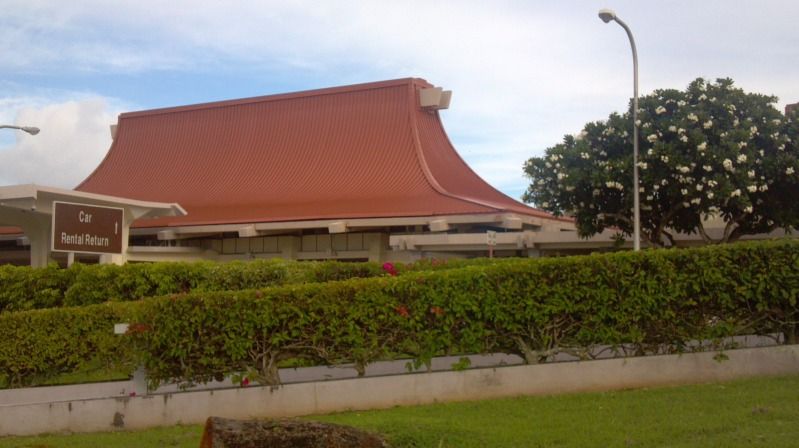
"That car?" my great uncle almost interjected.
She laughed, "ha, ha, yeah."
"No other one--"
"Just another Mustang" she said.
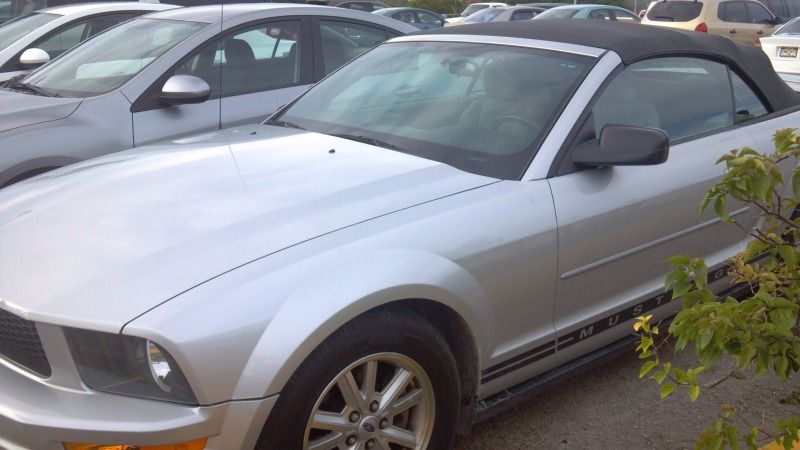
It was settled, we would be riding in style. From then on, we would be playing it cool, driving down the highways with the top down, winking at ladies and anyone else who passed us (aka, we didn't actually do this). I have a new found love for the sea breeze air. It has a habit of getting in your lungs and sticking there, of swirling around in invisible wafts, but damn if it didn't feel good going past your face in a convertible Mustang.
--------------------------------------------------
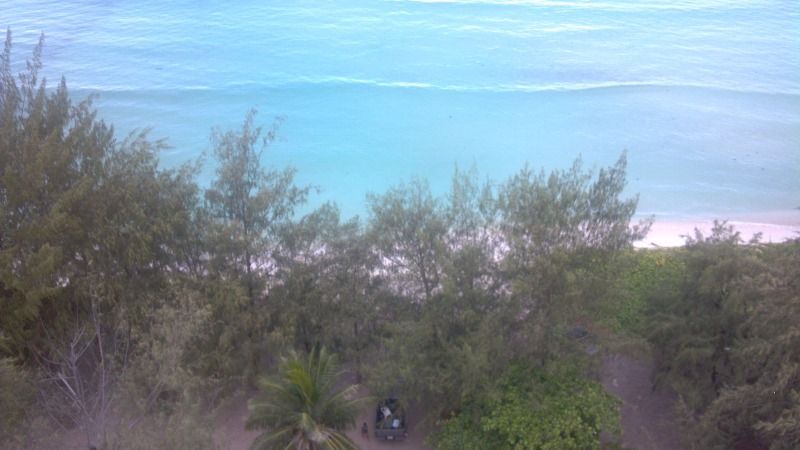

The hotel we stayed in was the Aquarius, aloft in a posh pent house on the top floor. From the balcony, we got a great view of the Pacific. Its waves washed up on shore. Aqua-marine and gorgeous, the sea still puts me in awe. It stretches on forever, so much so that you can begin to see the curvature of the Earth. That scares me. It's so endless... the thought of it makes me feel so small. But enough philosophical doldrums...
Uncle Mark had to stop and renew his license to build on Saipan before we could really get exploring. When he was inside, Rob and I checked out this vacant building which was worn with time. It was in a beautiful location, overlooking the sea from a hill. If Saipan's economy was better, I am sure someone would have rebuilt long ago. Just look at the tree next to this decaying old house.
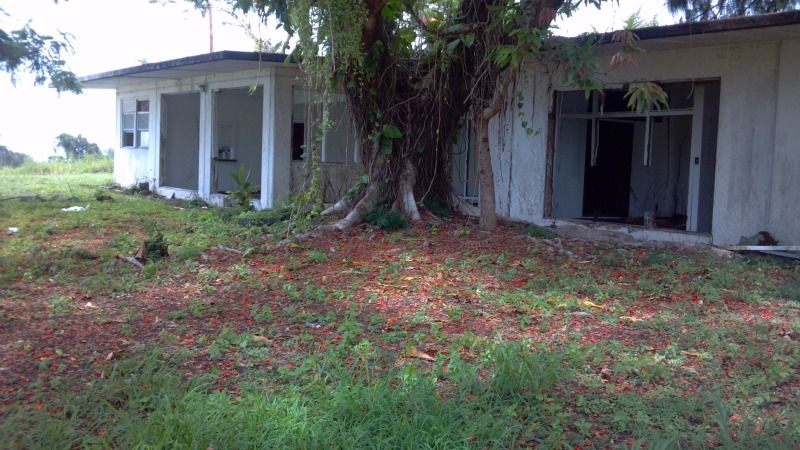

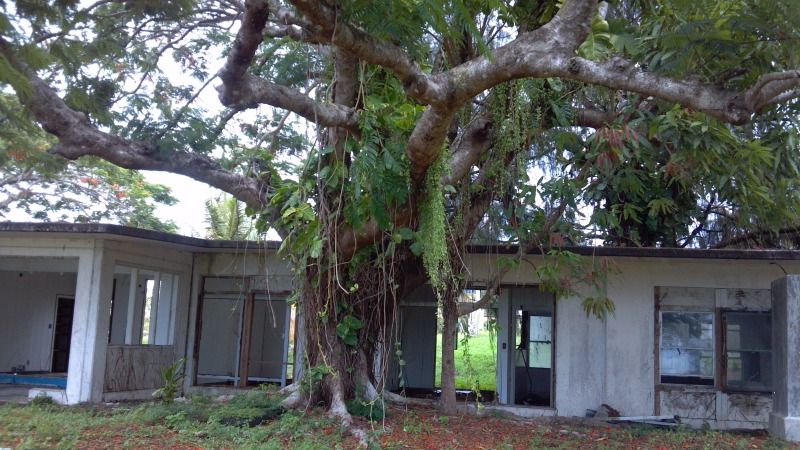
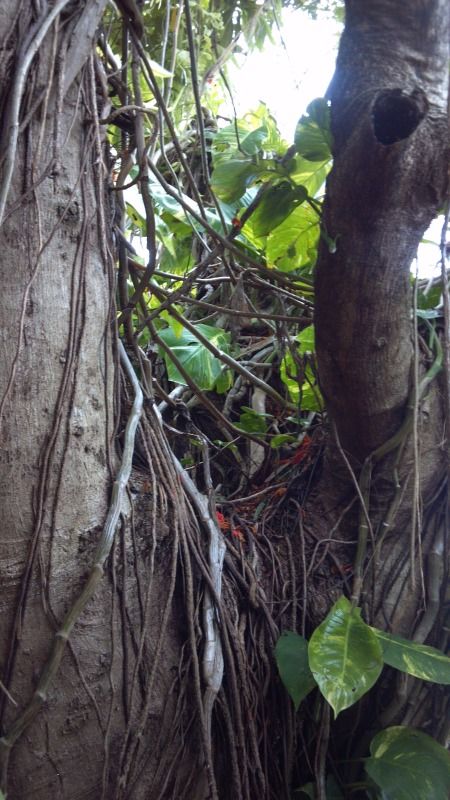
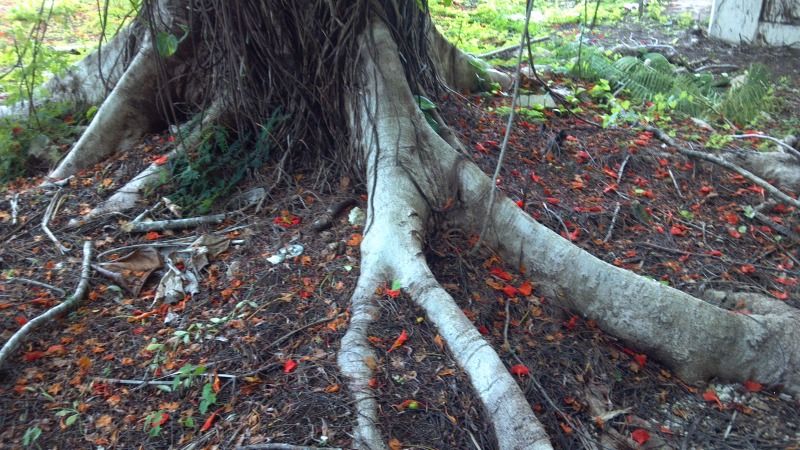
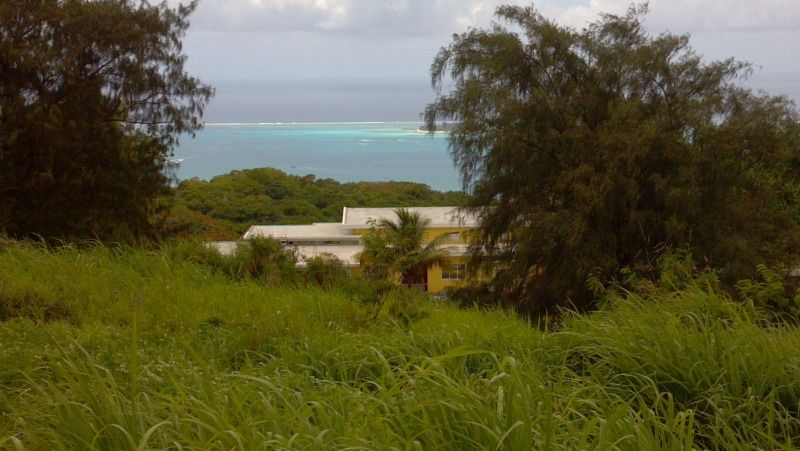

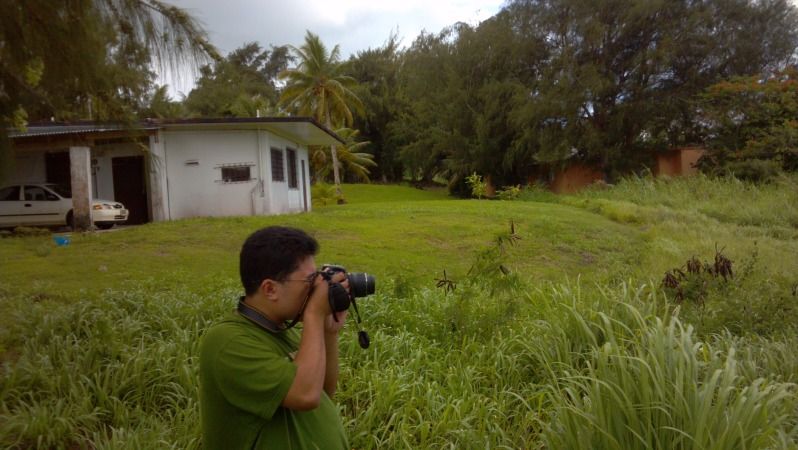
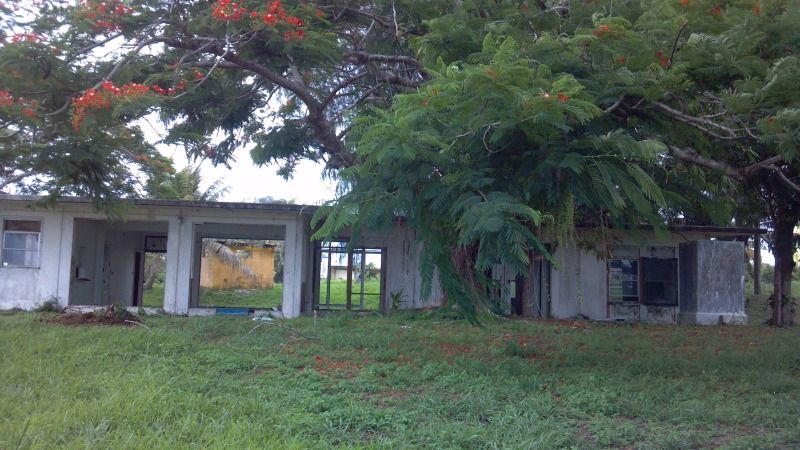
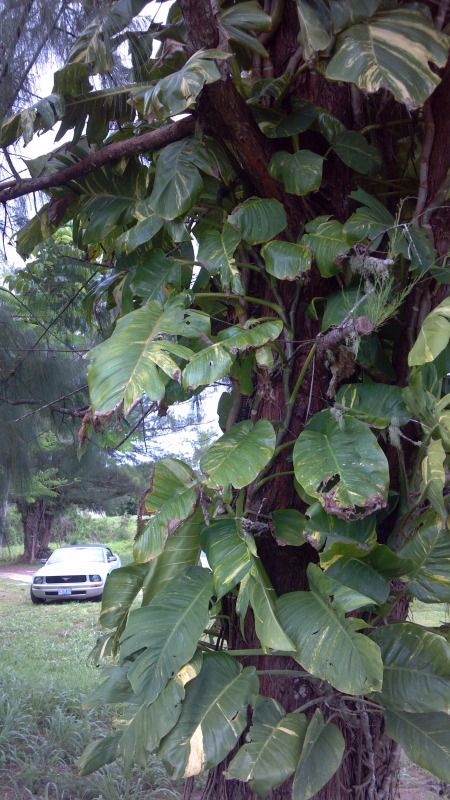
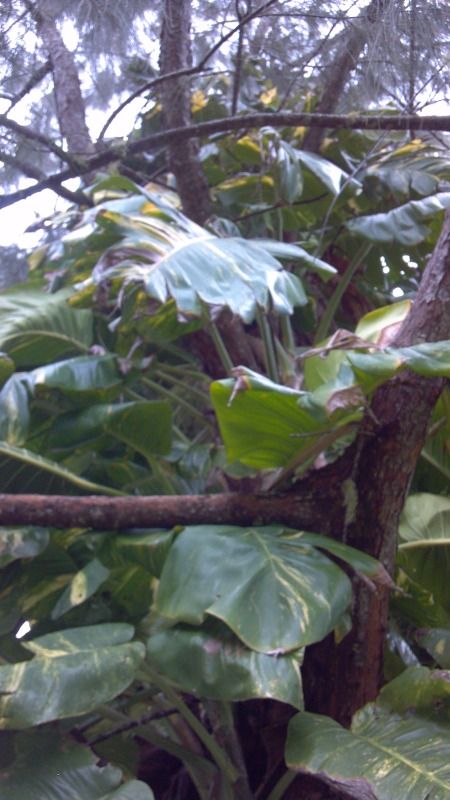
The floor was covered in plaster. The wood was rotting. A ruined house like this in Montana would be filled in with spider webs, bee hives, and other nasty bugs, but these islands have a surprising lack of arachnids. For this I am thankful. However, they do have giant banana spiders which appear sometimes (I am fortunate enough to have avoided them for this long), and these gross looking things that hang their webs on buildings and vegetation.
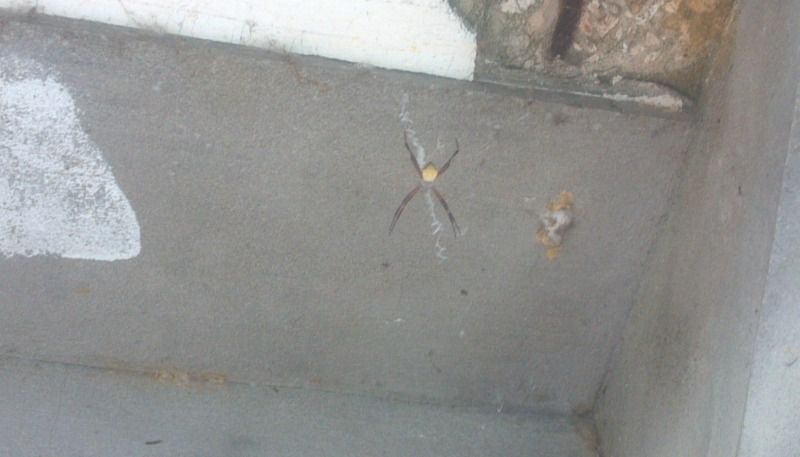
You can really start to see how much Saipan's economy has suffered with buildings like these. But the island is constantly reinventing itself. I am sure this time will be no different.
--------------------------------------------------
After a tour of the American Memorial Park Museum which I will cover later, we visited Sugar King Park. It is dedicated to the sugar cane industry which thrived here during Japanese control. This park moved me. Its trees were heart-brakenly green, their mossy bark like nothing I have seen in my lifetime, and through them moved a current of history-- the rusted old train which used to cart sugar, the Katori Jinja shrine, and the tall statue of the "Sugar King" himself.


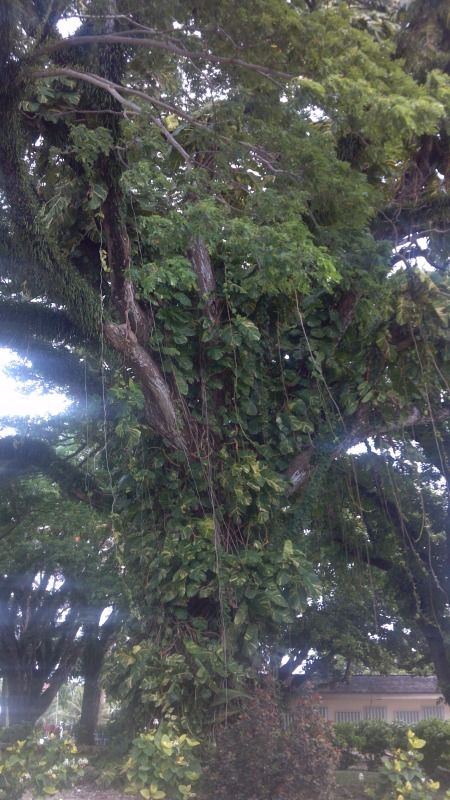
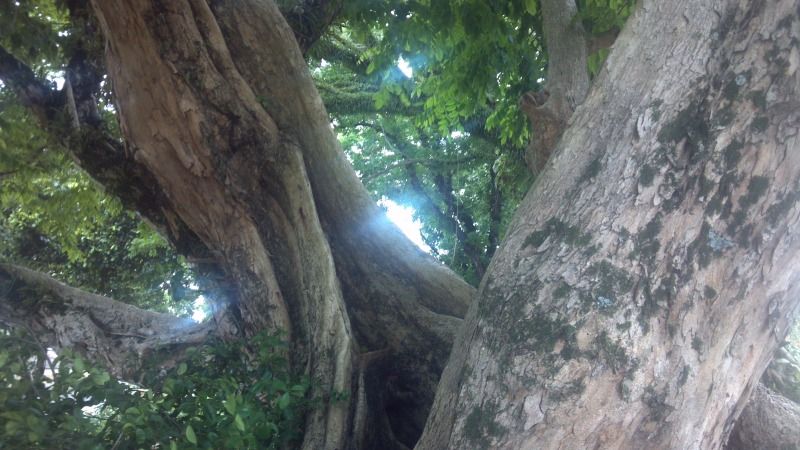
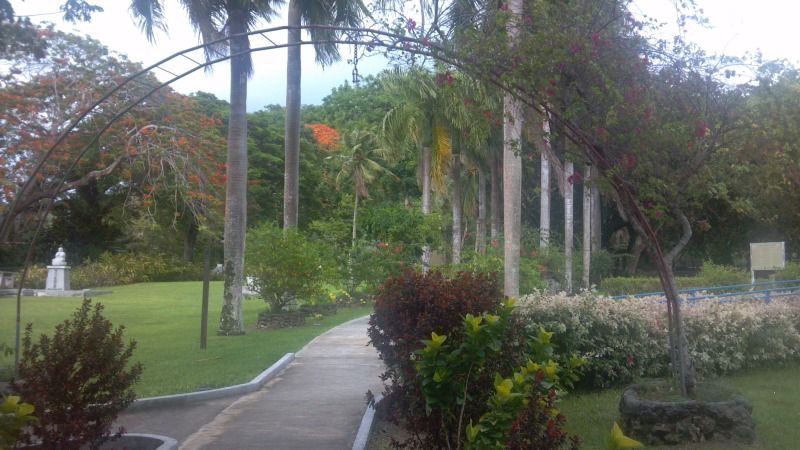

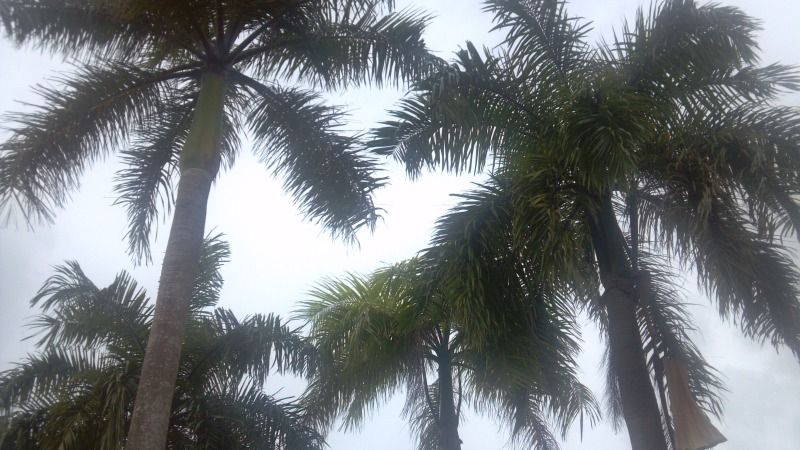

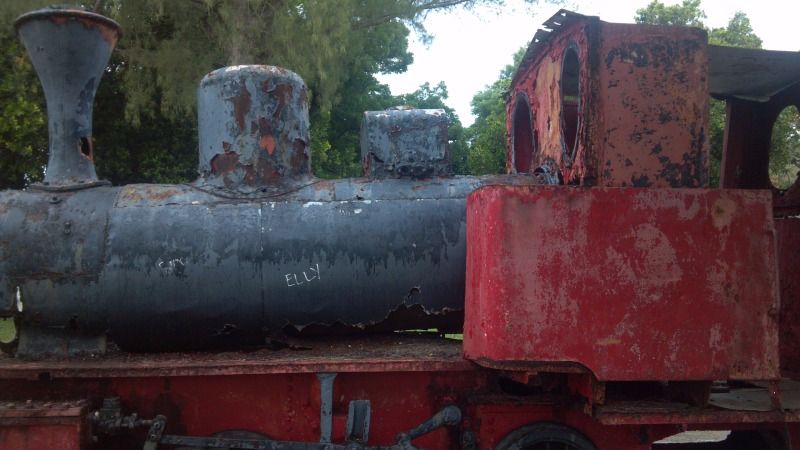

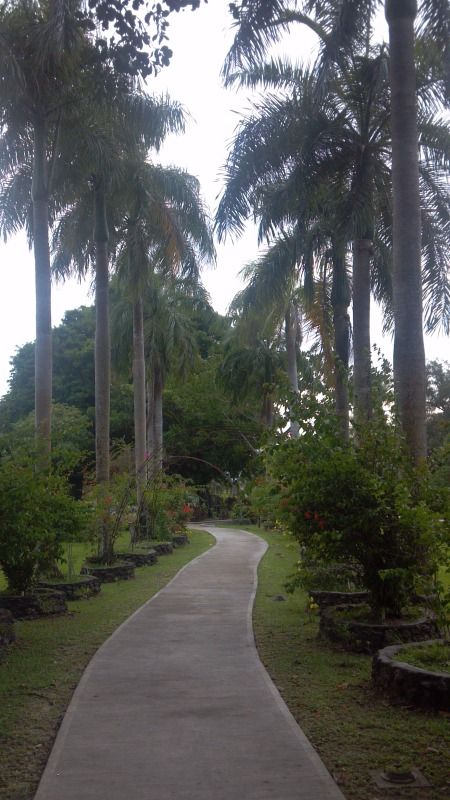
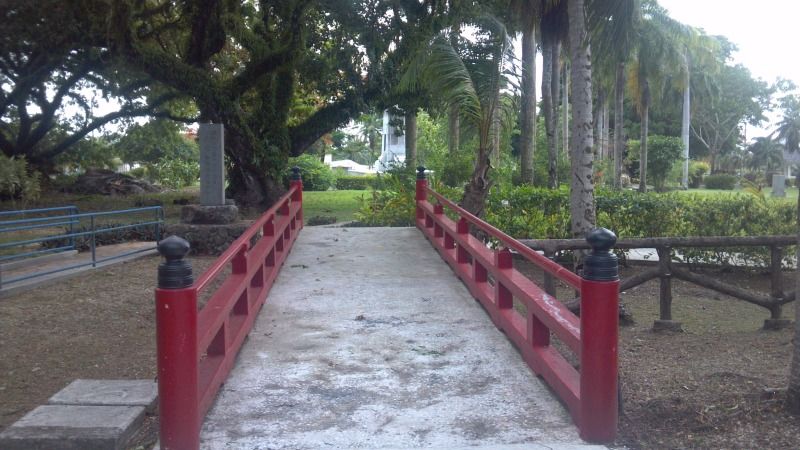
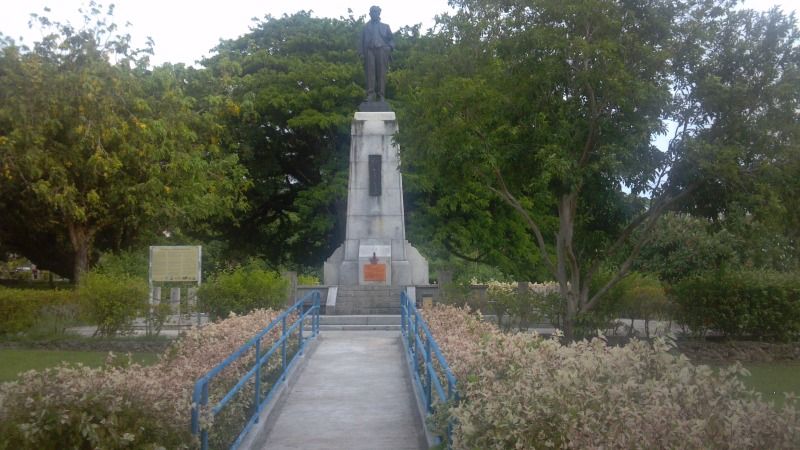
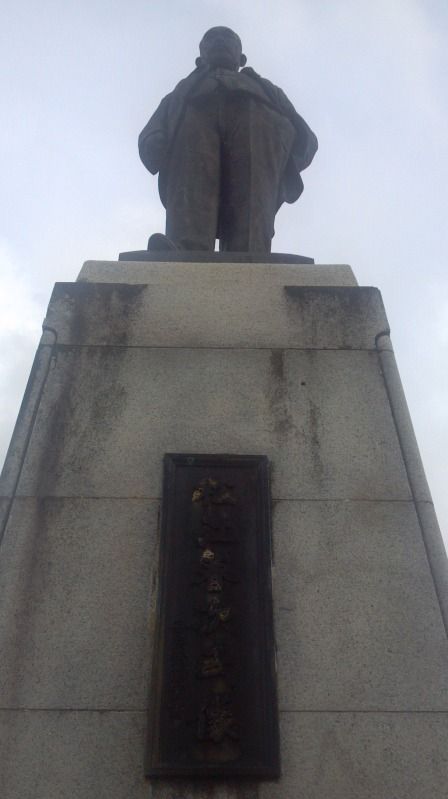
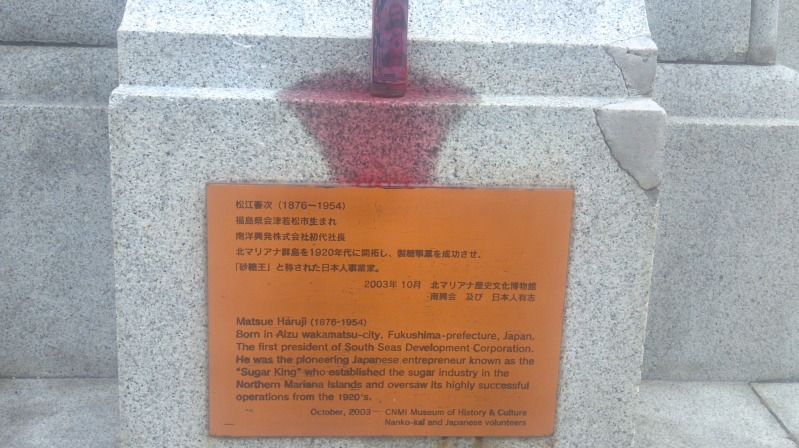
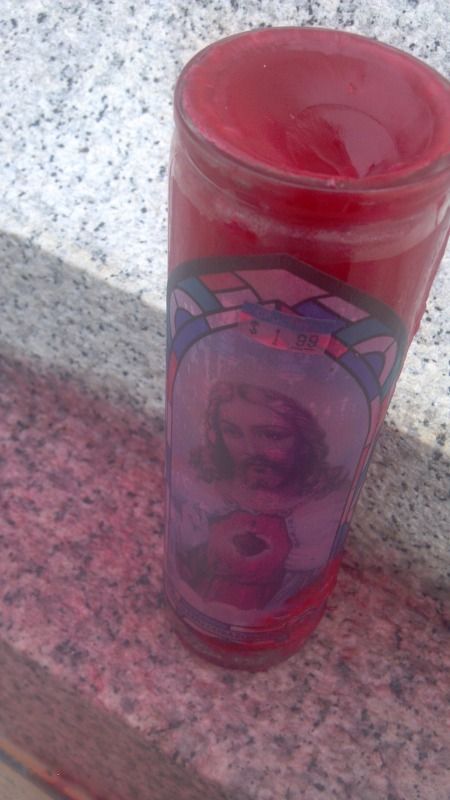
The metal likeness of Matsue Haruji, the "Sugar King", looms in the park. He was placed here almost religiously in 1934, his presence never too far away. I walked toward him and read his history, a foreign man with a foreign name from an almost unimaginable time. Where I came from, statues of old tycoons were usually constructed for white people by white people. It was odd for me that this one was built, raised, and mounted by the hands of another people. Flowers blossomed around the obelisk shaped stone, a metal square with Japanese writing fashioned on it. Haruji, I read, was famous for expanding Japan's sugar industry as well for producing Japan's first sugar cube. According to this plaque, he studied at Louisiana State University and eventually became president of the Niitake Sugar Refining Company in 1915. After touring Saipan, he concluded that the island was "ideally suited for sugar cane agriculture," and under his tutelage, jungles were torn down to make way for planting, rail roads were built across the island, and a refining mill was constructed in Chalan Kanoa. It reads that "the sugar industry was the single most successful commercial enterprise in Japan's South Sea territories. By the mid-1930s it accounted for nearly 60% of the total South Seas revenues ushering in a level of economic prosperity in the Northern Marianas unheard of in other parts of the tropical Pacific." Haruji was an industrious man. Often we think of the Japanese during this time as being blood-thirsty imperials, but it is important to remember they were human. They still had dreams, fears, and people who loved them.
Amazingly, the "Sugar King" statue survived World War II. Maruji's head still lingers with the trees, observing his people's potential. In fact, there are bullet holes visible on his edifice. Islanders come here to pray, perhaps. I can imagine why, there is something holy about this park. In fact, someone had placed a candle with Jesus' likeness below Haruji, the wax melting along the orange plague on the base of the stone. Was it done in defiance of the Shinto-esque surroundings? Was somebody receiving a religious experience by standing in front of him? The wax almost looked like blood. So many people died during the Second World War. Did this remind the person who placed it that we all bleed Christ's blood, that all blood is holy?
The park is full of little areas adorned with stone shrines. Their existence fascinated me, made my mind ring with something that is hard to describe. You can almost feel the spirits swirling around you, whispering in your ear. "This is our land," they tell you, "respect us, do nothing to upset us, honor us." You do not want to cross a forest spirit. They can be wily, mean-spirited, at least that's what my gut was telling me. Mysteriously, my hands were covered in a blue powder, where it came from I do not know. Was it somehow spiritual? I will not know that either.
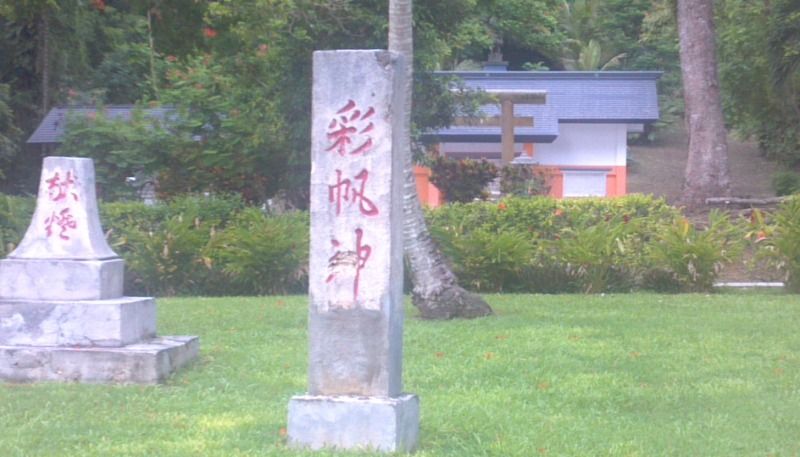
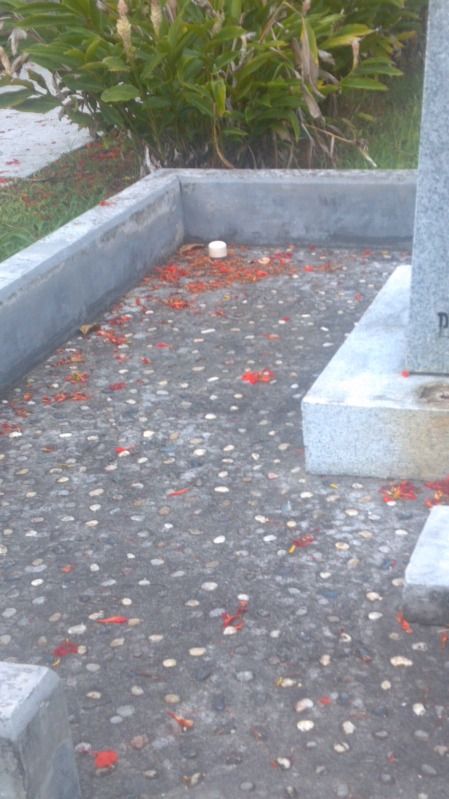

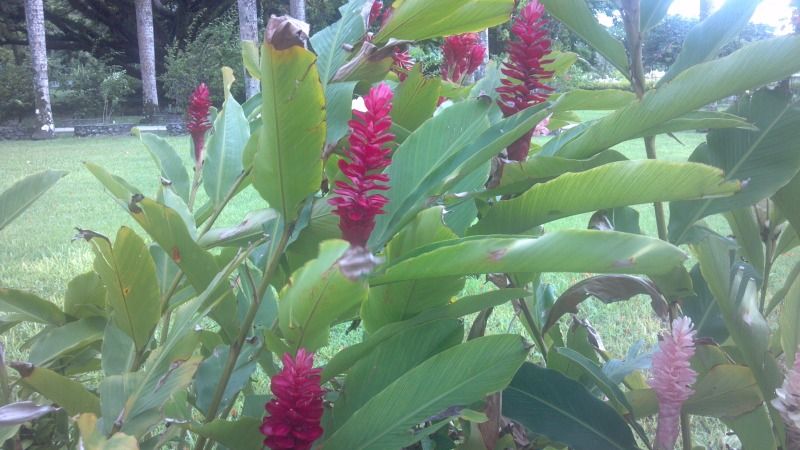
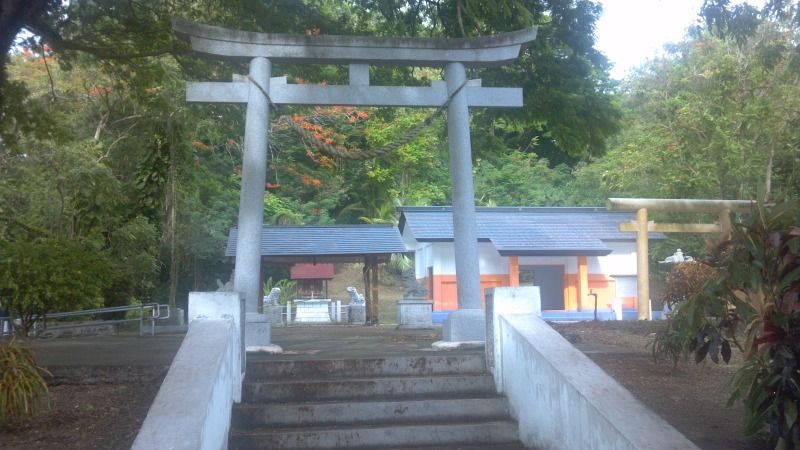
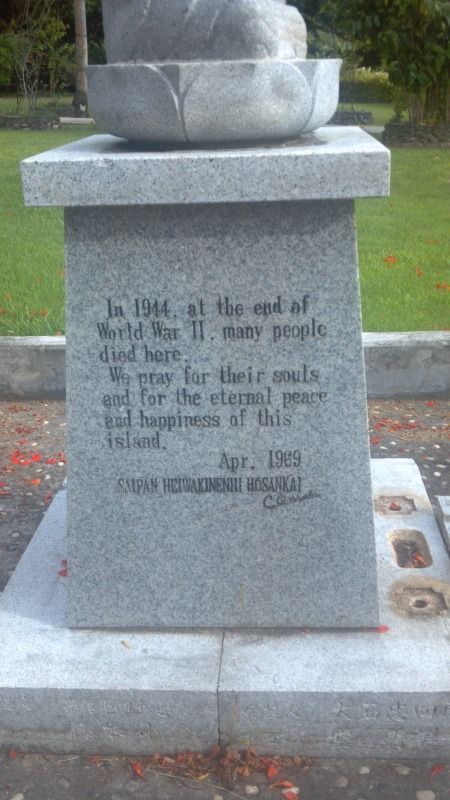
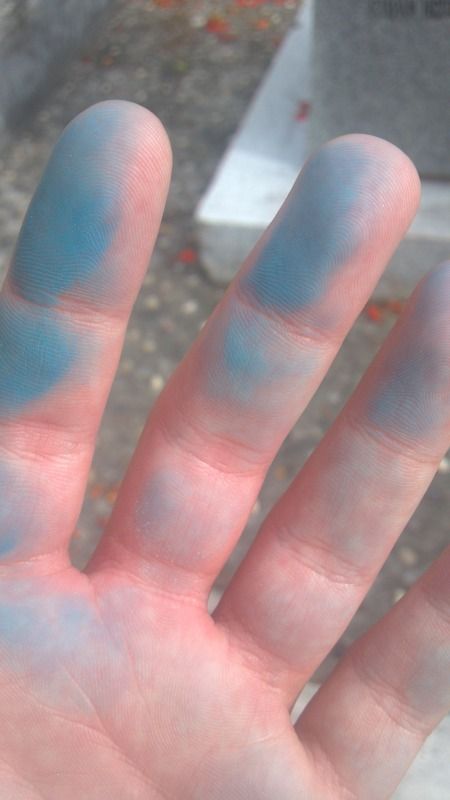

 A smiling, karma-ready gate. (Yes, that was a reference to reddit)
A smiling, karma-ready gate. (Yes, that was a reference to reddit)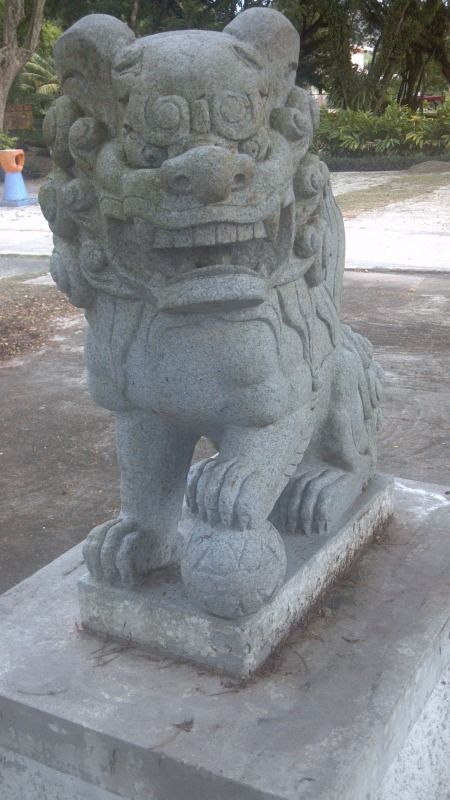
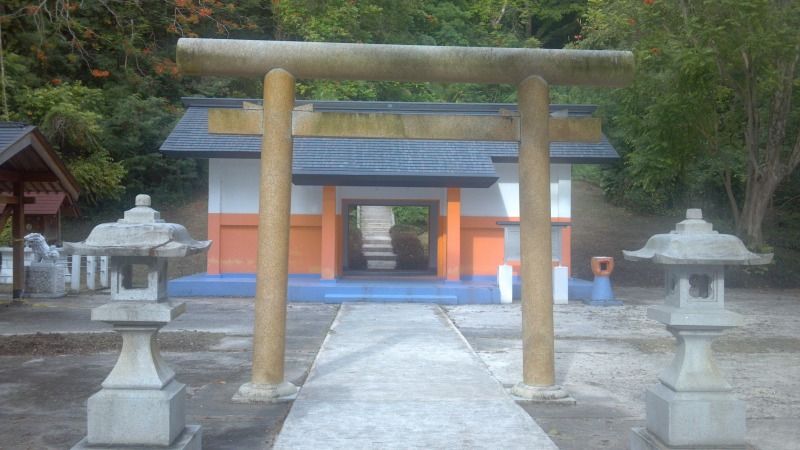
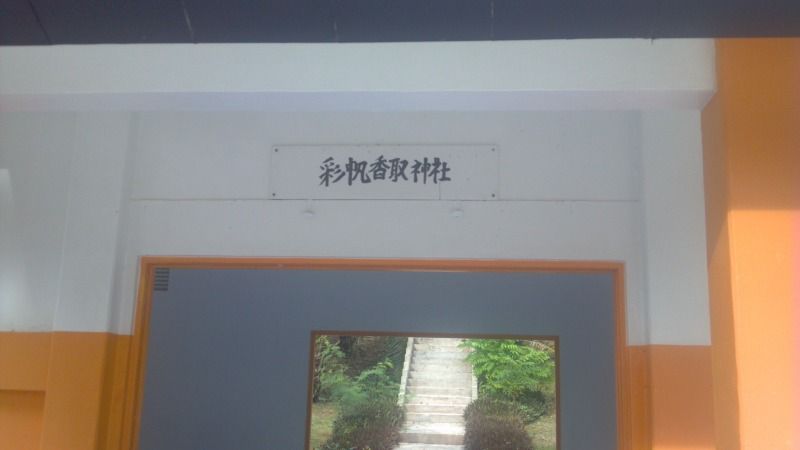
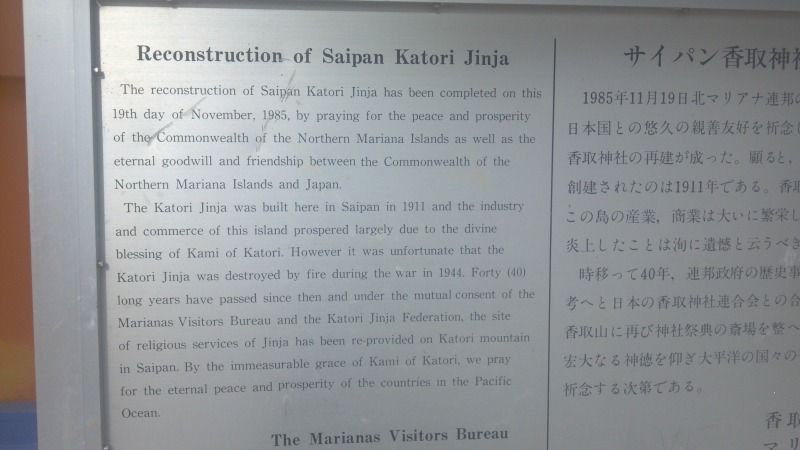
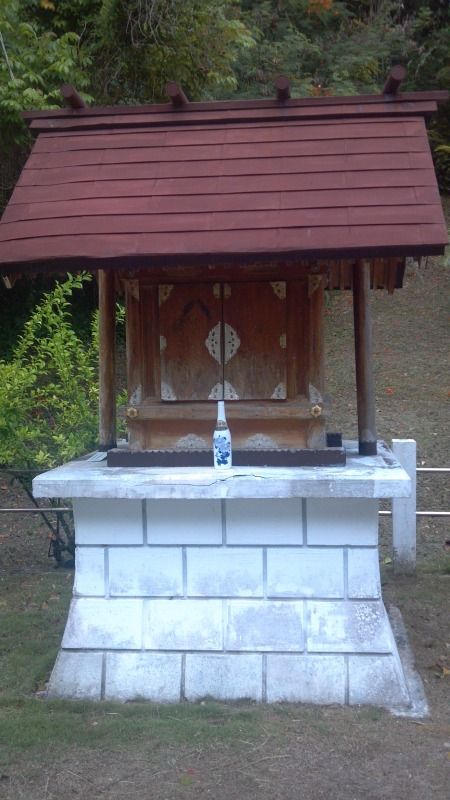
These shrines, the Katori Jinja, were built in 1911. However, according to the sign, they were destroyed during the War, victims of a fire. Its reconstructers wrote that "the commerce of this island prospered largely due to the divine blessing of Kami of Katori." It was reconstructed on November 19th, 1985 to honor the dead and their spirits, kami being a Japanese term for "the spirits, natural forces, or essence in the Shinto faith" (Wikipedia).
I walked up these stairs towards whatever was at the top. Pleasantly, birds sang softly but overall the forest was quiet in its midday slumber. This was quite an experience and reminded me of the Biblical passage: "the Most High does not live in houses made by men" (Acts 7:48).
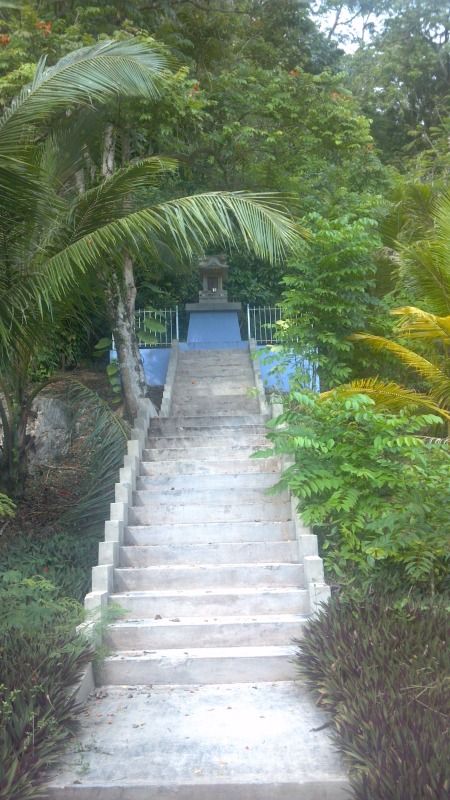
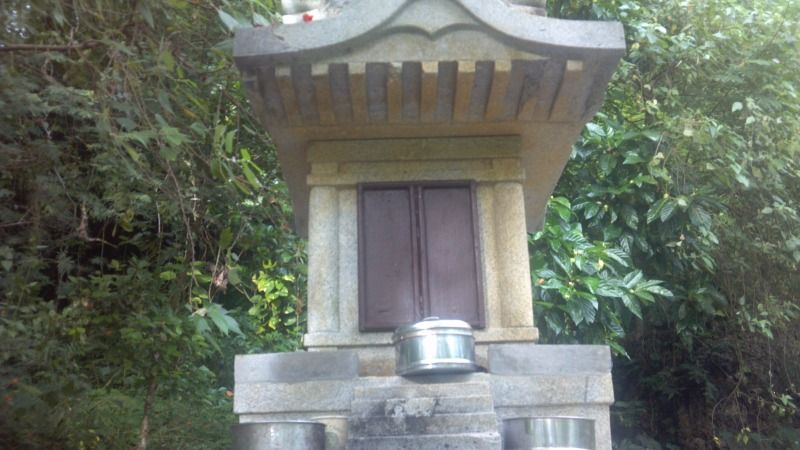
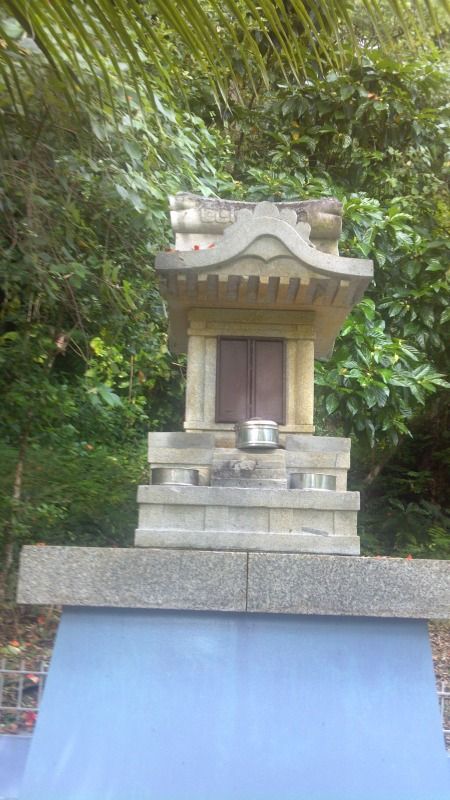
Here lived the little spirits. When I was young, I liked to believe that small, bearded gnomes lived throughout the forests of South Dakota. They constructed tiny houses and collected berries, surviving off the land like scavengers. The camp I attended in the summer fostered this imaginal belief. But something still feels right about it. I loved this mythology. It made me extremely happy to know that there were creatures out there, that certain areas of the forest were dangerous for me to enter, and that black and white magic weaved through those trees like a Disney film. In a way, this Shinto shrine beckons back to that time when gnomes could be real. Next to the metal tray an empty cup sat. I picked it up, hoping that if the spirits did exist I could at least win their favor and they would let me leave in peace.
After searching awhile for a garbage can, I found a trail into the jungle. The stone steps were dark and mysterious, dappled with the shade of the trees. This was delightful. I was alone with my thoughts, with the trees, shrubbery, and birds. My camera was out, yes. My fear was that it was separating me from my experience. But I am learning that it did not. The experience was still mine, the steps still spiritually moving me forward to an unknown destination. I moved up them, down them, and finally reached this structure. The home of the bell I assume that would take me back to this place some day.
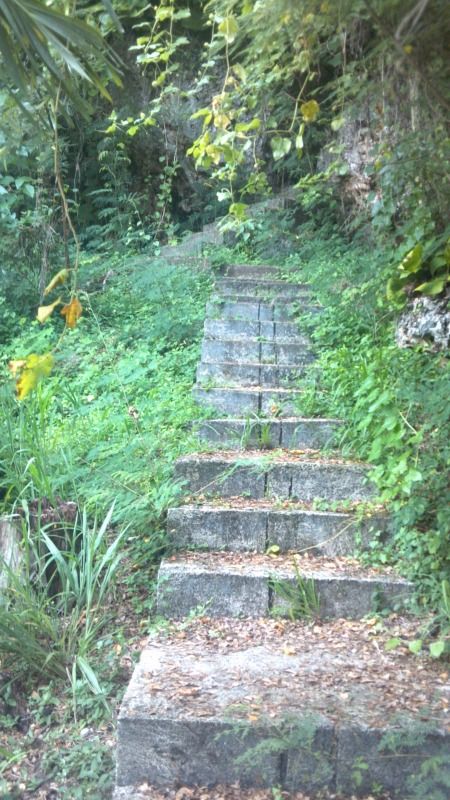
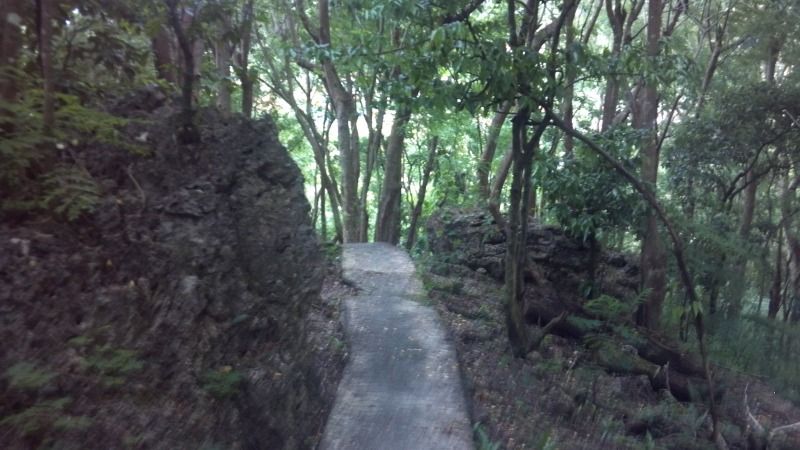
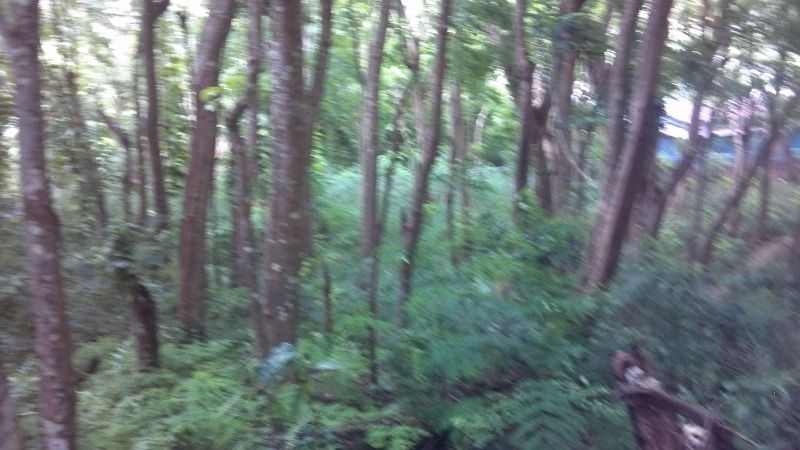
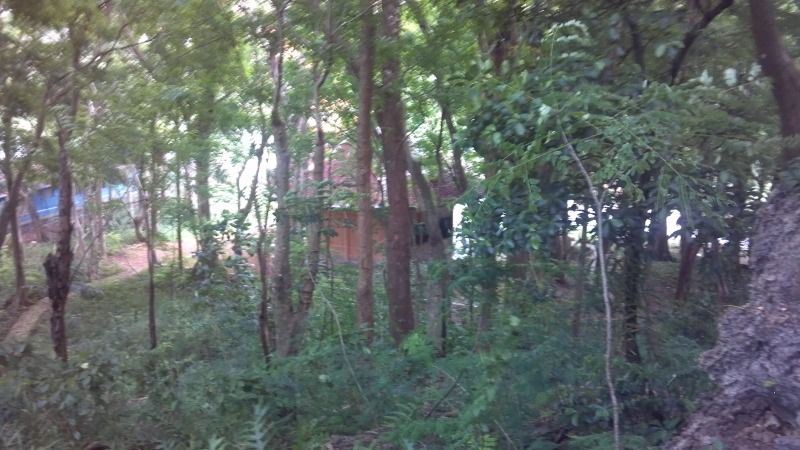

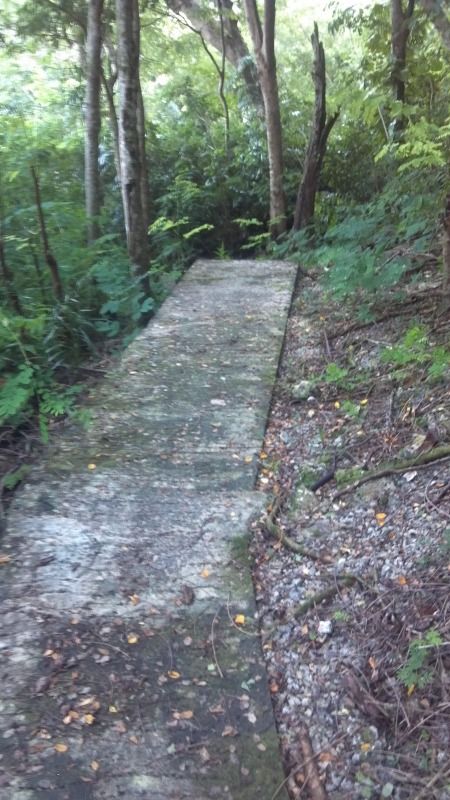


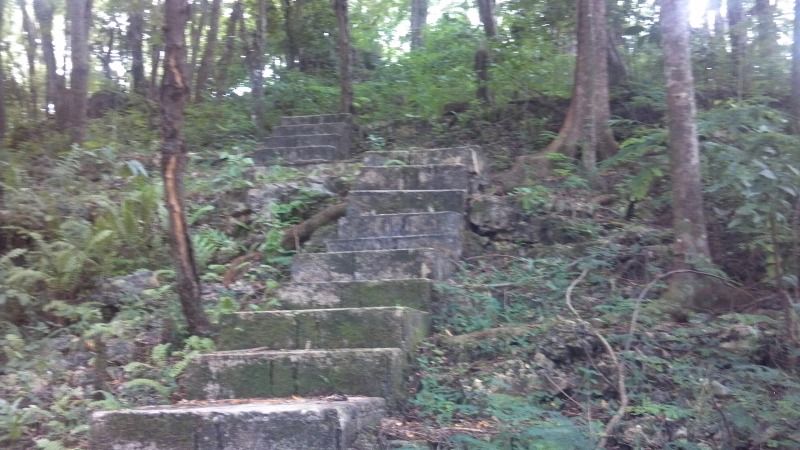
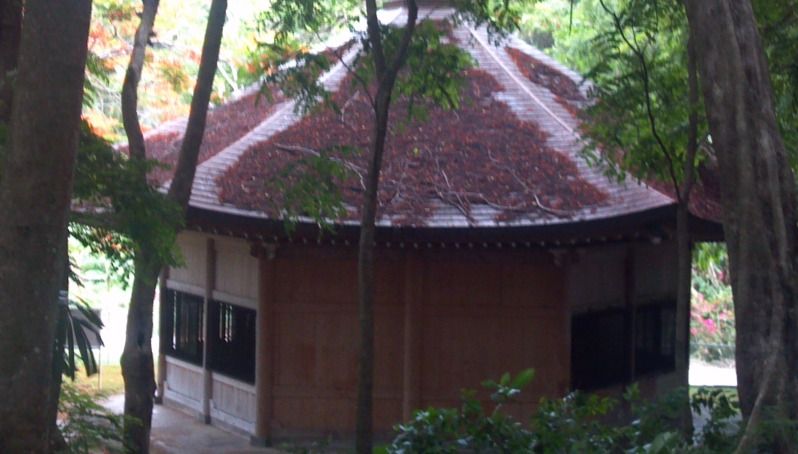
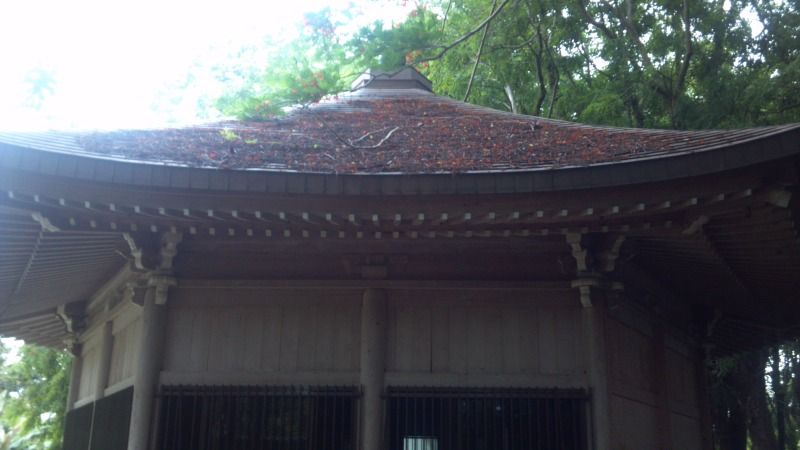
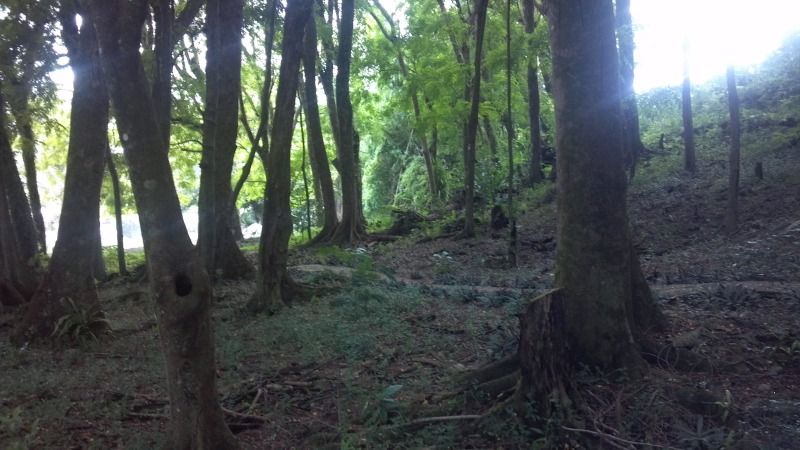
Pictures cannot capture the beauty of this area. This place put me in a sublime mood, of spiritual preparedness for what was to come next: Polynesian dancers.
--------------------------------------------------
Later that evening we visited the Hafadai Hotel, the name being an amalgamation of the Chamorro word for hello, "Hafa Adai". It's pronounced quickly ("ha-fa-day") for the curious. There were quite a few people there, Japanese, Korean, Chinese, and Russian, waiting for the Polynesian dance show to begin. The musicians came out and played lame Jimmy Buffet cover songs as we chowed down on dried squid (surprisingly good). What is it about Jimmy Buffet that goes so well with a warm summer day?
Soon, the dancers came out. The women wore coconut bras and grass skirts. The men went shirtless and had grass necklaces around their head. Dancing around each other in mock ceremony, they called a Japanese girl on stage and gave her a flower. For my part, I had to ponder the bastardization of their culture. Didn't this show hurt them spiritually? They sold their old ways to tourists who believed in a fake Disneyland reality of past. I, myself, went for the ladies, but couldn't help feel a tad ashamed of this spectacle. The Chamorros are not Polynesians but Micronesians anyway, so the way of life represented here was not accurate of the surrounding area. One has to wonder if the majority of the people watching knew that. I would imagine not.
I have to admit that the fire handlers were quite impressive though. They twirled their batons like ninja masters, swish, swish, swish. The women also participated, spinning these long chains with fire on the tips. They whipped the ground with flame, staring at each other as they did it. Finally, four of the dancers came out at once, a grand orgy of pyromania. Afterword, Rob and I took a picture with them. They were, indeed, cute girls.
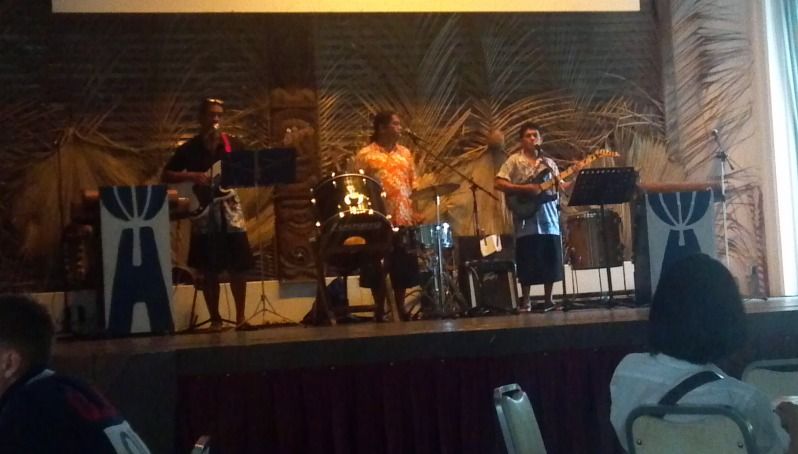


After a meandering trip we decided to eat there and were serenaded by echoes of home: "Yesterday" by Paul McCartney and "Imagine" by John Lennon. A performer played for us as a cat howled, begging for food. It was an interesting evening.
--------------------------------------------------
This tank sits starkly, surrounded by beautiful trees. Before it was placed here, it was in the bay. It is the image I shall end on. I will post part 2 of the Saipan Diaries by this Wednesday. Please enjoy this as a snippet of what the next blog will be about. WAR.


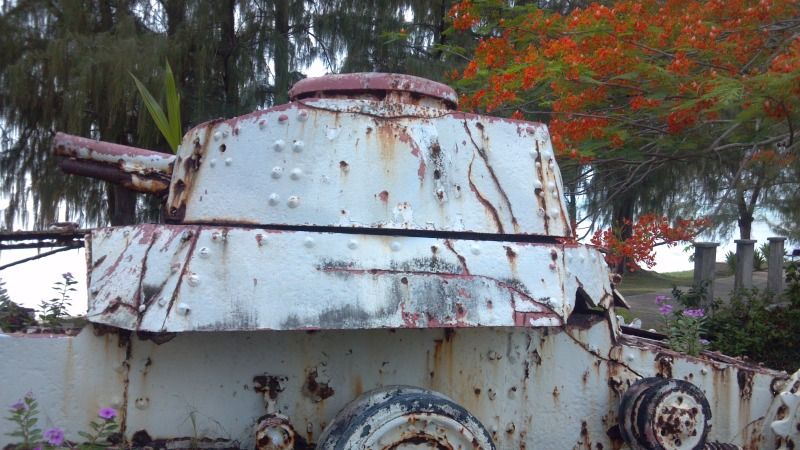
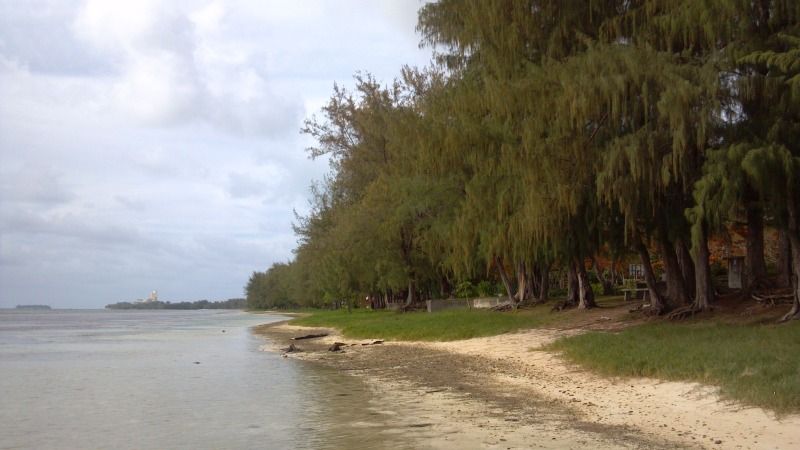
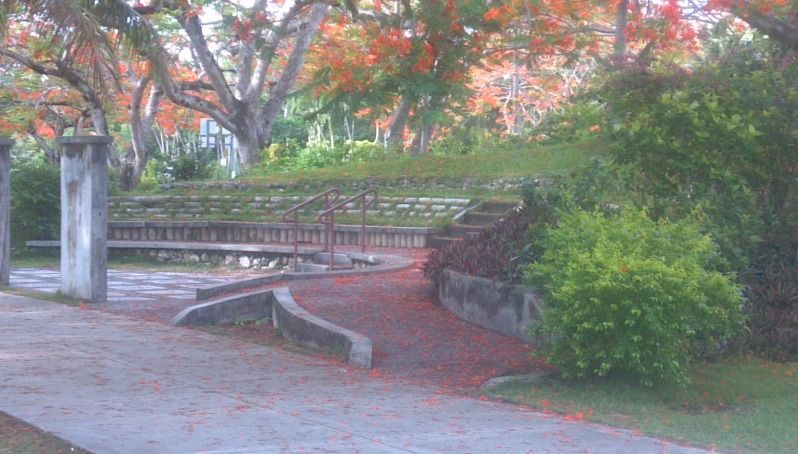


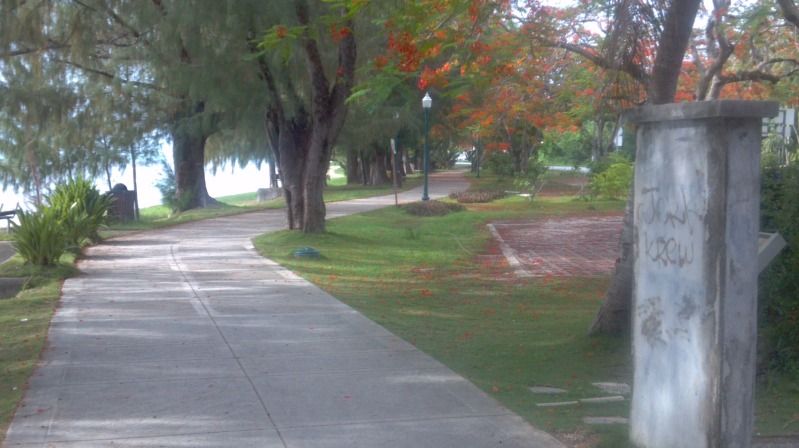
No comments:
Post a Comment